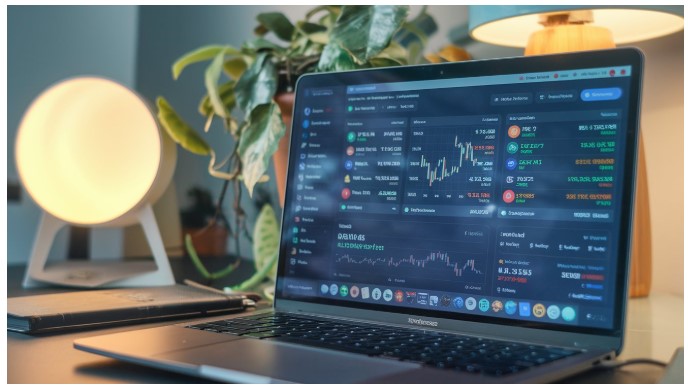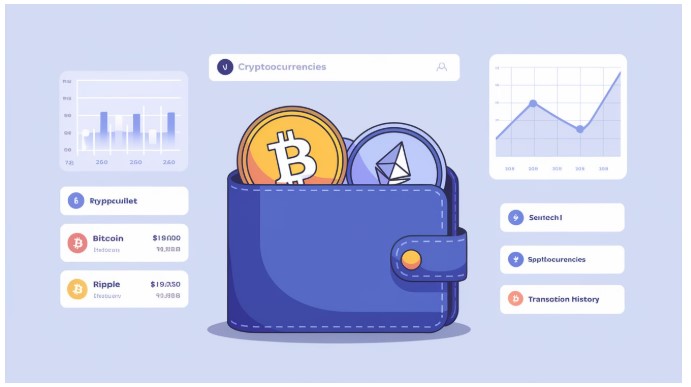The cryptocurrency market’s explosive growth has made security more crucial than ever before. A secure crypto exchange platform serves as the foundation for protecting your digital assets, making it essential to understand and evaluate security features before choosing where to trade. With cyber threats evolving daily, the stakes are particularly high – a single security breach can result in irreversible losses.
Understanding Basic Security Infrastructure
The backbone of any cryptocurrency exchange’s security lies in its fundamental infrastructure. Modern exchanges implement multiple security layers that work in harmony to protect user assets. Advanced server architecture forms the first line of defense, utilizing enterprise-grade hardware and sophisticated software solutions to guard against potential threats. Regular security audits and penetration testing ensure these systems remain robust and up-to-date.
At the infrastructure level, exchanges employ continuous monitoring and real-time threat detection systems. These systems analyze patterns and identify potential security breaches before they can cause damage. Additionally, responsible exchanges maintain separate environments for development and production, ensuring that any changes undergo rigorous testing before implementation.
Key infrastructure components include:
- Multi-layer firewall systems
- DDoS protection services
- Encrypted data storage
- Regular security assessments
Two-Factor Authentication (2FA)
Two-factor authentication represents one of the most critical security features in modern cryptocurrency trading. This additional security layer significantly reduces the risk of unauthorized access, even if someone obtains your password. Quality exchanges implement sophisticated 2FA systems that go beyond basic SMS verification, offering multiple authentication options to suit different security needs.
The most secure platforms enforce 2FA across all sensitive operations, not just during login. This comprehensive approach ensures that even if an attacker gains initial access, they cannot perform critical actions without the second authentication factor.
Essential 2FA implementations should include:
- Multiple authentication method options
- Mandatory 2FA for withdrawals
- Backup recovery options
- Clear setup instructions
Cold Storage Solutions
Cold storage represents a critical security measure that protects the majority of user funds by keeping them offline. Leading cryptocurrency exchanges typically store 90-95% of their digital assets in cold storage facilities, physically disconnected from the internet. This approach significantly reduces the risk of cyber attacks and unauthorized access. The remaining funds are kept in hot wallets to facilitate daily trading operations and maintain liquidity.
Professional exchanges implement sophisticated cold storage systems with multiple security layers, including geographic distribution of assets and regular security audits. They often utilize specialized hardware security modules (HSMs) that provide an additional layer of protection for private keys.
Essential cold storage features include:
- Multi-signature authorization requirements
- Regular proof-of-reserve audits
- Geographically distributed backup systems
- Insurance coverage for stored assets
SSL/TLS Encryption
Data encryption serves as a fundamental security measure that protects all communications between users and the exchange platform. Modern exchanges implement state-of-the-art SSL/TLS protocols to ensure that sensitive information remains confidential during transmission. This encryption prevents man-in-the-middle attacks and data interception attempts.
Proper encryption implementation extends beyond basic HTTPS protocols. Leading exchanges utilize additional encryption layers for sensitive operations and maintain strict certificate management policies. Regular updates ensure that encryption protocols remain current and resistant to emerging threats.
IP Whitelisting and Address Management
Address management security features provide crucial protection against unauthorized withdrawals and account access. Advanced exchanges implement comprehensive IP whitelisting systems that allow users to restrict account access to specific IP addresses. This feature effectively prevents unauthorized access attempts from unknown locations, even if an attacker obtains login credentials.
The withdrawal address management system adds another security layer by requiring verification for new withdrawal addresses. Users must confirm new addresses through multiple channels, typically including email confirmation and 2FA verification. Many exchanges also implement mandatory waiting periods for new withdrawal addresses to prevent immediate unauthorized transfers.
Key address management features should include:
- IP address whitelisting capabilities
- Withdrawal address verification
- Customizable security timeouts
- Geographic login restrictions
KYC and AML Compliance
Know Your Customer (KYC) and Anti-Money Laundering (AML) procedures form a crucial part of exchange security infrastructure. While some users view these requirements as cumbersome, they actually provide essential protection against fraud and criminal activity. Reputable exchanges implement comprehensive verification processes that help prevent identity theft and protect legitimate users’ assets.
These compliance measures involve multiple verification layers, typically becoming more stringent as transaction volumes increase. Advanced exchanges utilize automated systems combined with human oversight to maintain efficient yet thorough verification processes. This hybrid approach helps detect suspicious patterns while minimizing delays for legitimate users.
Essential compliance features include:
- Multi-level verification tiers
- Document validation systems
- Transaction monitoring
- Suspicious activity reporting
Multi-signature Wallets
Multi-signature (multisig) wallet technology represents one of the most powerful security innovations in cryptocurrency trading. This feature requires multiple authorized signatures to approve transactions, significantly reducing the risk of unauthorized withdrawals. Leading exchanges implement multisig protocols for both cold storage and hot wallet systems, ensuring that no single point of failure can compromise user funds.
The implementation of multisig technology varies among exchanges, but the most secure platforms typically require at least three separate signatures for significant withdrawals. This approach ensures that even if one or two authorization keys are compromised, funds remain secure.
Real-time Monitoring Systems
Advanced monitoring systems operate continuously to detect and prevent security threats. These systems utilize artificial intelligence and machine learning algorithms to analyze trading patterns, identify suspicious activities, and flag potential security breaches in real-time. The best exchanges employ multiple monitoring layers that work together to provide comprehensive security coverage.
Effective monitoring includes automated alerts for unusual account activity, suspicious trading patterns, and potential security violations. These systems also help prevent market manipulation and ensure fair trading conditions for all users.
Key monitoring features should include:
- AI-powered threat detection
- Automated trading surveillance
- Real-time alert systems
- Behavioral analysis tools
Additional Security Considerations
Beyond core security features, leading cryptocurrency exchanges implement supplementary measures to enhance platform safety. Insurance coverage plays a vital role, protecting users against potential losses from security breaches or operational issues. Progressive exchanges maintain comprehensive insurance policies that cover both hot and cold storage assets, providing additional peace of mind for users.
Bug bounty programs represent another crucial security layer, engaging the global security community in identifying and addressing potential vulnerabilities. These programs incentivize ethical hackers to report security issues before malicious actors can exploit them. Regular third-party security audits complement these efforts, providing independent verification of security measures.
Essential additional features include:
- Comprehensive insurance coverage
- Active bug bounty programs
- Regular security assessments
- Incident response protocols
Evaluating Exchange Security
When choosing a cryptocurrency exchange, thorough security evaluation becomes crucial for protecting your investments. Start by examining the platform’s security track record and transparency regarding their security measures. Research the exchange’s history of handling security incidents and their response to past challenges.
Look for exchanges that regularly update their security protocols and maintain open communication about security practices. The most reliable platforms provide detailed documentation about their security features and maintain transparent incident reporting policies. Consider the exchange’s regulatory compliance status and their relationships with respected industry partners.
Security evaluation checklist:
- Historical security performance
- Regulatory compliance status
- Security feature documentation
- Independent audit reports
Best Practices for Users
Even the most secure exchange platform requires users to follow proper security practices. Creating strong, unique passwords serves as your first line of defense against unauthorized access. Enable all available security features offered by the exchange, including advanced authentication options and withdrawal limits.
Regular account monitoring helps detect suspicious activity early, allowing for prompt response to potential security threats. Keep your software updated, including your operating system, browsers, and any trading applications. Use dedicated devices for cryptocurrency trading when possible, and avoid accessing your account from public networks.
Key user security practices:
- Regular password updates
- Comprehensive security feature utilization
- Account activity monitoring
- Secure device management
Conclusion
Selecting a cryptocurrency exchange with robust security features represents a crucial decision for any crypto investor. The combination of advanced security technologies, proper compliance measures, and user-focused protection creates a comprehensive security framework. Remember that security should always be your primary consideration when choosing a trading platform, as it directly affects the safety of your digital assets. By understanding and evaluating these essential security features, you can make informed decisions about where to trade and store your cryptocurrency investments.

